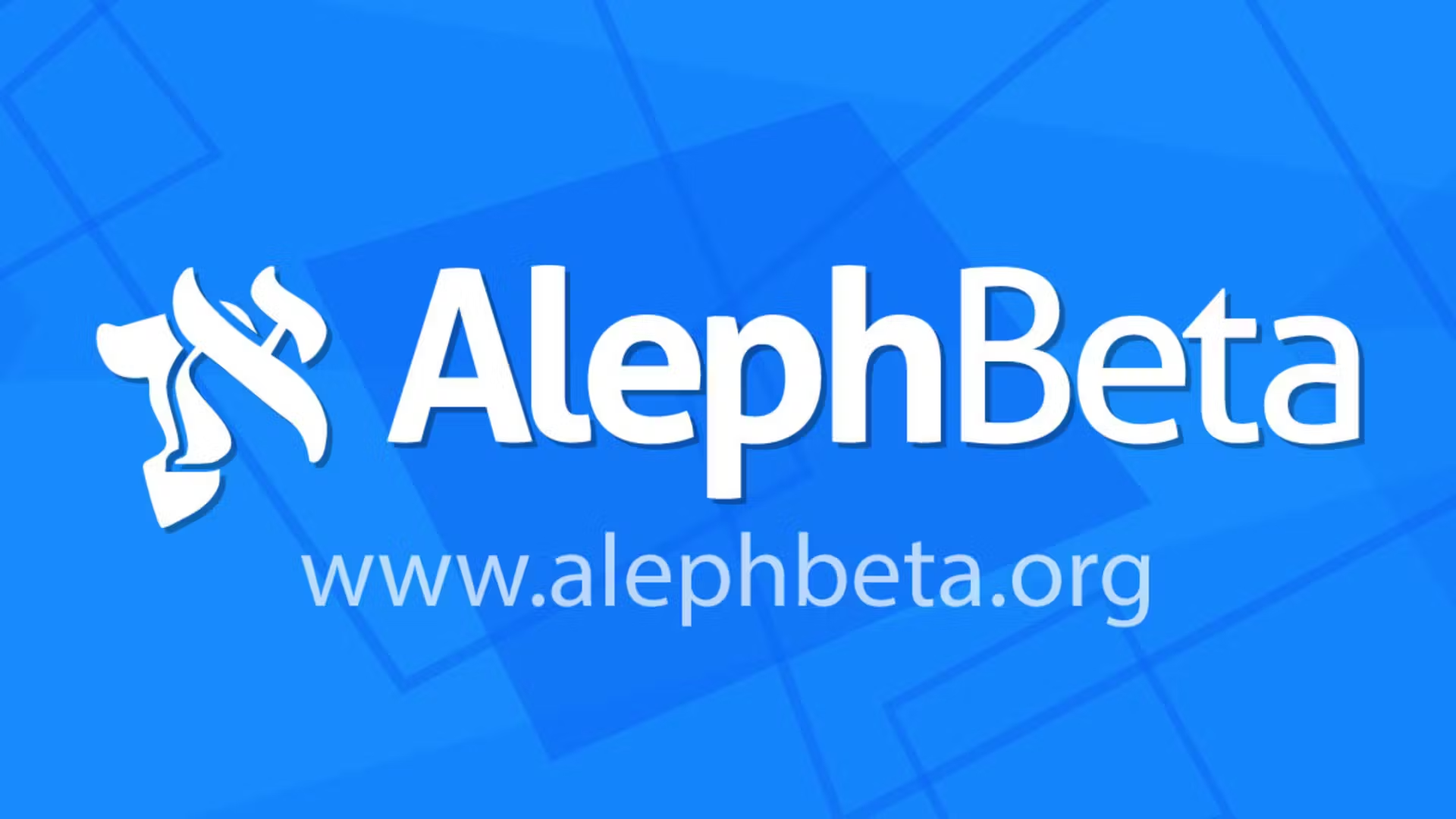
How to Read Midrashim
How Should a Modern Reader of the Bible Make Sense of Rabbinic “Stories?”
BY Adina Blaustein | February 28, 2024 | 5 Minute Read
Are Midrashim Written for Children?
As a child, I loved reading anthologies of Midrashim (ancient rabbinic interpretation). I was enthralled by Abraham’s heroism when he smashed his father’s idols, standing in defiance of his pagan society. It definitely seemed to explain why God chose him. And it was fun to consider that Pinchas is the same person as Elijah the prophet - I mean who doesn’t love thinking about reincarnation? Or that when the Jewish people crossed the sea, God nourished them with fruit trees along the journey - such a great addition to a dramatic story. The Talmud is full of these stories about characters in the Bible, and there are additional books just dedicated to Midrashim.
But as I grew older, my feelings toward Midrashim changed. I stopped appreciating the creativity of Midrashim and I started to view them as…a bit ridiculous. As I started to read the Torah text carefully, the tales in the Midrashim that I grew up on seemed completely disconnected from the basic storyline, and totally absurd. Take the story of Abraham smashing the idols - nowhere in the text do we see Abraham grabbing any axes or hammers and smashing stuff. So where are the rabbis coming from in suggesting this story? I started to feel an inner voice questioning if the rabbis even read the Torah at all when they came up with their ideas.
This problem really bothered me, because Midrashim are such a key part of our Jewish library. And it felt disrespectful to dismiss texts written by our rabbis as “ridiculous” or “absurd.” So it seemed clear to me that I needed a new perspective! I now view Midrashim as a really valuable component in Torah study, and I’d like to share the approach that enabled this transformation.
Taking Midrashim Seriously
The first step to making sense of Midrashim is to adopt a different perspective regarding what the rabbis were actually trying to accomplish in writing these “wild stories.”
I used to think that the rabbis were just trying to be original or one-up each other with creative stories. But the problem with viewing Midrashim as stories is that they seemed ridiculous, confusing - and maybe even counterproductive - in actually understanding Torah.
Here’s the shift in perspective. What if Midrashim were never meant to be seen as standalone stories? What if Midrashim are meant to be appreciated as a complement to the Torah text? Midrashim are a commentary, a gloss on the Torah text. This new lens pushes us to think about Midrashim as something that cannot be understood or appreciated without the full context.
Rabbi David Fohrman, the lead scholar at Aleph Beta, likes to share the following analogy that helps get the point across. Picture yourself listening to someone practicing piano. Initially, you hear the melody being played - a pleasant and recognizable tune. Then, the piano player just plays the harmony. Unlike the melody, when you listen to the harmony in isolation, it’s just a collection of disconnected cords that don’t make sense on their own. Finally, you hear the melody and the harmony being played at once. And that final piece of music is beautiful, rich, and complex.
Now, think of the Torah text as the primary melody, and Midrashim as the harmony. The Torah text establishes a tune, and the Midrashim, much like harmony in music, introduces variations and layers, resulting in a rich symphony of meaning.
This analogy helps resolve the struggle with appreciating Midrashim. The problem stems from reading Midrashim without paying attention to the Torah text simultaneously, which makes Midrashim come across as somewhat silly, akin to listening solely to the harmony in a musical piece. However, when you combine the two, it’s incredible. When you realize that Midrashim are meant to be read alongside the Torah text, as a sort of commentary, you can come to appreciate how the rabbis are drawing your attention to a deeper appreciation of the words in the Torah. This reframe completely changed how I viewed Midrashim.
A Second Look at a Famous Midrash
Let’s look at a midrash and see this reframe in action. Here’s a beloved midrash, which is etched indelibly in my mind from childhood. Picture the scene. Baby Moshe (Moses) is floating in the basket, in the Nile. His terrified sister, Miriam, hides in the reeds, anxiously scanning the scene. And low and behold, the daughter of Pharaoh herself emerges to bathe in the Nile and spots the basket. What happens next changes the course of history. She sends her amah, her maidservant, deeper into the river to examine the object, and saves baby Moshe.
That alone makes for a great story. But along come the rabbis and suggest something so fanciful it borders on the absurd. They suggest that the daughter of Pharoah’s OWN ARM stretches many feet, and she grasps the basket and saves baby Moshe (Sotah 12b). As a child, it seemed like a cool story. But as an adult, it’s so strange. I mean, if your arm suddenly stretched out many times it’s natural length, you would be screaming! It would be insanely dramatic and even frightening. What could the rabbis possibly be getting at?
It’s a cool story, albeit a strange one, and doesn’t seem to add much. However, when we consider this well-known Midrash as a commentary on the Torah text, we can gain a fuller appreciation for the nuances that the rabbis observed and the deeper messages that come to light.
In this video, Rabbi David Fohrman of Aleph Beta analyzes the Midrash and demonstrates how the rabbis provide insightful commentary on Exodus chapter 2. Rabbi Fohrman's analysis also illustrates that Midrashim aren't solely for children; they are a powerful tool for adults seeking a deeper and more nuanced understanding of the Torah.
More How to Read Torah Videos

Were there really fruit trees when the Sea split?
Video series • Part 1 of 2 • 9 min
In this video, Rabbi Fohrman introduces us to a very strange midrash, which tells us that as the nation of Israel walked through to freedom, there were fruit trees surrounding them, and explains that a parallel story, early in Genesis, is a clue to understanding this midrash.

How Does Midrash Work?
Video • 6 min
In this video, we explore the strange midrash in which the arm of Pharaoh's daughter stretched through the river to fetch Moses. Why do the Sages tell us such an odd story? Rabbi Fohrman argues that we need to put ourselves into the eyes of Pharaoh's daughter, and help us see that when we want to achieve something, God will help us find a way to do it.
What is Aleph Beta?
Aleph Beta is a unique kind of Torah library. Led by our founder, Rabbi David Fohrman, we are dedicated to high-level, textual Torah learning for adults that is intellectually and spiritually sophisticated, that enlivens your Jewish practice and helps you forge a deeper connection to God. Whether you’ve been learning in yeshiva for years or you’re just beginning your Torah journey, you’re sure to find something meaningful and surprising waiting for you here.
Browse our library of over 1,000 beautifully produced animated videos, podcasts, deep dive courses, and printable guides. Topics include the weekly parsha, Jewish holidays & fast days, laws & mitzvot, prayers, relationships, big philosophical ideas and more. Have something to say at the Shabbos table that will amaze your family and guests and bring deep meaning into their lives.


